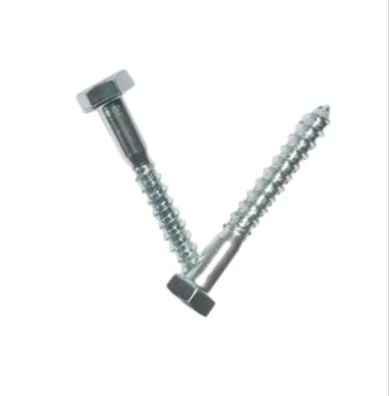Dec . 04, 2024 20:28 Back to list
3mm hex nut dimensions
Understanding 3mm Hex Nut Dimensions
When it comes to small-scale mechanical systems, the significance of nuts and bolts cannot be overstated. Among the various types of nuts used in fastening applications, the 3mm hex nut is one of the most commonly utilized components. It is essential to understand the dimensions and specifications of this nut to ensure proper application in various engineering and construction tasks.
What is a Hex Nut?
A hex nut is a type of fastener that has a hexagonal shape, which allows for easier gripping and turning by tools such as wrenches. The six sides are designed to provide a robust grip, ensuring that the nut can be tightened or loosened without slipping. The hex nut is typically used in conjunction with a bolt and is essential for creating stable, secure connections in machinery and constructions.
3mm Hex Nut Dimensions
The dimensions of a 3mm hex nut may seem modest, but they play a crucial role in the overall functionality of a mechanical assembly. Here are the standard specifications associated with a 3mm hex nut
1. Width Across Flats (WAF) The width across the flats of a 3mm hex nut is typically around 5.5mm. This dimension refers to the distance between two opposing flat sides of the nut. This size ensures compatibility with a 3mm bolt.
2. Height The height of a 3mm hex nut is generally about 3mm. This dimension indicates how tall the nut is from the bottom to the top surface. A shorter height can be beneficial in applications where space is limited.
3. Thread Pitch The thread pitch is an essential aspect of any nut and bolt. For a 3mm hex nut, the standard thread pitch is 0.5mm. This measurement represents the distance between adjacent threads and influences how tightly the nut can be secured onto the bolt.
3mm hex nut dimensions

4. Inner Diameter The inner diameter of a 3mm hex nut is precisely 3mm, which corresponds to the diameter of the bolt it is intended to fit. A snug fit is essential for maintaining the integrity of the connection.
5. Material and Coating While not a dimension, the material used for the nut is crucial. Most 3mm hex nuts are made from carbon steel, stainless steel, or alloy steel, providing durability and resistance to corrosion. Some nuts may also have coatings, such as zinc plating, for enhanced protection against environmental factors.
Applications of 3mm Hex Nuts
3mm hex nuts are widely used in various applications due to their size and reliability. They are commonly found in electronic devices, automotive components, machinery assembly, and construction projects. Their compact size makes them particularly useful in applications where space is constrained, while their secure fit ensures that assemblies can withstand vibrations and dynamic loads.
Choosing the Right Hex Nut
When selecting a 3mm hex nut, it is critical to consider the application requirements. Ensure compatibility with the corresponding bolt, and assess whether the material and coating meet your environmental conditions. For instance, if the assembly will be exposed to moisture or corrosive elements, opting for stainless steel or a coated version may provide the necessary protection.
Conclusion
Understanding the dimensions and applications of a 3mm hex nut is fundamental for anyone involved in mechanical assembly or engineering tasks. These small yet mighty fasteners play a vital role in ensuring the stability and security of various structures and components. By paying attention to the specifications, you can make informed decisions that promote the longevity and reliability of your projects, ultimately leading to successful outcomes in your endeavors.


